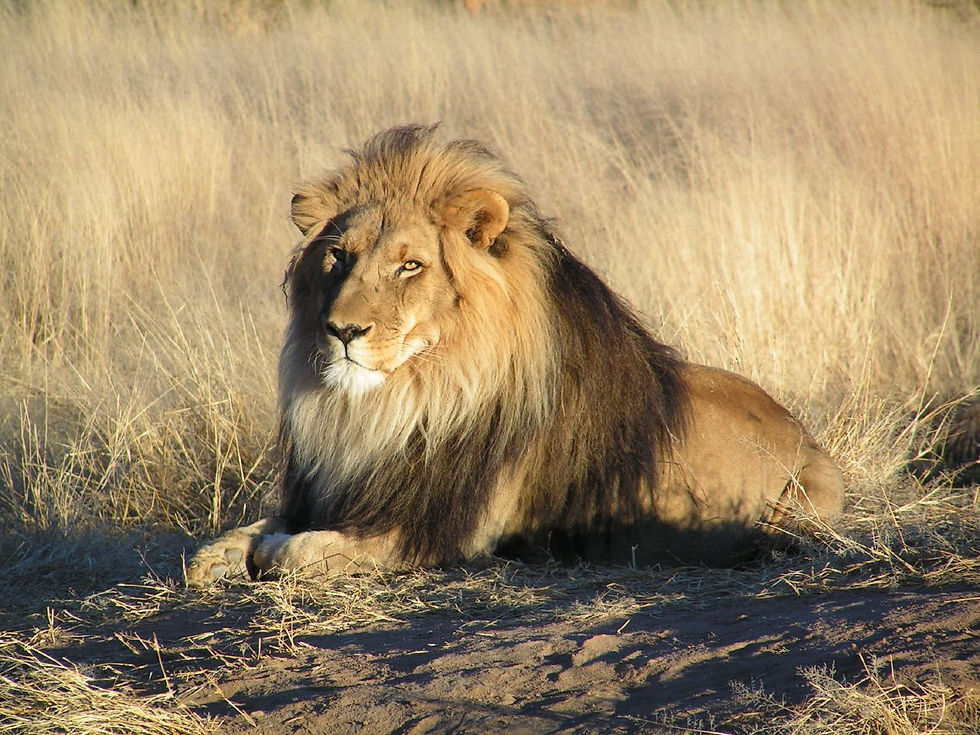
CREATURE-PEDIA
African Lion




Crouch to the ground, they wait, their supple spines ready to spring faster than a rubber band being snapped, teamwork sets these killers apart from other felines, pride strength in unity has made the African lion a predator of legendary proportions. Depicted in cave drawings dating back over 15,000 years, the lion muscular body, beautiful mane and deafening roar have fascinated people throughout history, from Richard the Lionheart to the story of The Lion King, the lion embodies courage and savage grace. This majestic cat roams the south sahara desert and parts of southern and eastern Africa, standing 4 feet at the shoulder and weighing up to 500 pounds, it is an apex predator that feast primarily on zebras, gazelle and buffalo and will even much larger animals like giraffes, rhinos, hippos and elephants. The African lion is the only cat to live in social groups called prides, these pride are made up of 5 to 10 females, their cubs and several related males, and outsider are never admitted into a pride, lions separated from their prides typically die from starvation or from attacks by other prides. Prides are extremely united with little fighting even among the males, this cooperation of the pride is extremely important when it comes to hunting, while a lone lion can sometimes be a successful hunter of small game, multiple lions hunting together are able to bring down larger prey, which means more food for everyone. This icon of power is often called the “King of the Beasts”, but a better title might be “Queen of the Beasts”, for it’s female lions or lionesses that do up to 90% of the hunting for the pride. But this is because the male lion’s bulkier body and large mane are easy giveaways to potential prey, the more agile lionesses hunt in small groups stalking their targets through tall grass, the large pads on the bottom of their paws allow them to silently track their targets. As they creep closer, the killers watch and wait for the precise moment to attack, since most of their prey can run faster than them, the lionesses must make sure their prey has no chance of escape. They usually choose prey that is too slow, too old or sick. Being extremely muscular, the lion’s goal is to pounce on the prey, tackling it before it gets away, lions use their strong bodies to run in short bursts of up to 50 miles per hour. Lions are adept at capturing food in many different ways, being very knowledgeable about their territory, lions will corner their prey against cliffs or river banks to ensure a kill. When group hunting, lions are able to sneak around prey from all sides, so when the prey tries to escape from 1 lion, it will run right into another. Pinning their victim down, the fate is sealed, other members of the prey’s herd abante it knowing there’s no hope, the lion’s jaw can down at 600 pounds per square inch, 6x as strong as a human’s. To kill the prey, the lion will clamp down on the prey’s throat collapsing its trachea, no air is going to get in or out (it’s like tying a knot in a balloon). Now the feeding begins, lions will all eat their fair share of food the pride wants to make sure everyone has enough energy to hunt again, male lions always eat first followed by the lionesses, then the cubs finish the remains. Lions leave no food behind, literally licking the bones clean they have tiny backwards pointing hooks on their tongue will get every morsel of food off the bone, they’re also capable of eating 70 pounds of food in 1 sitting, which will satisfy their hunger for several days. To avoid the hot savannah days, lions will try to do much of their hunting at night like all cats, lions have an eye structure called the tapetum lucidum, this obserb and reflects any available light allowing the lion to see potential food clearly in both daylight and darkness. This is why their eyes are said to glow in the dark, lions eat whatever they can, so when wildlife is unavailable, they’ll kill livestock. Unfortunately, this behavior makes them a target for farmers and ranchers and others, considering them a pest to be exterminated, for this reason as well as poaching and loss of habitat, there are now less than 20,000 of this majestic creatures living in the wild of Africa. With numbers are low enough to be considered a threatened species, but the ones that do remain are sometimes savage example of one of nature’s most perfect predators.
Did You Know?
A lion’s roar can be heard about 5 miles or 8 kilometres away.
Male lions don’t do the hunting, but they do protect the pride from rival prides.

